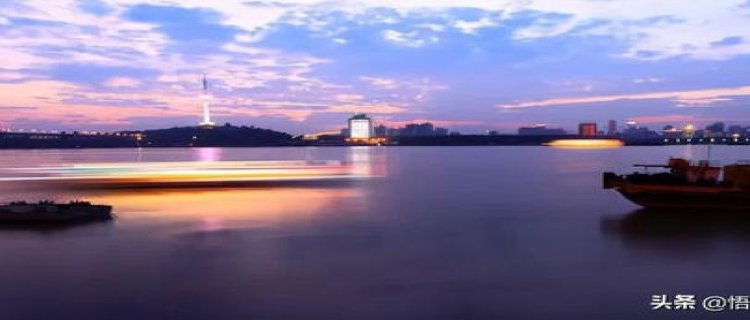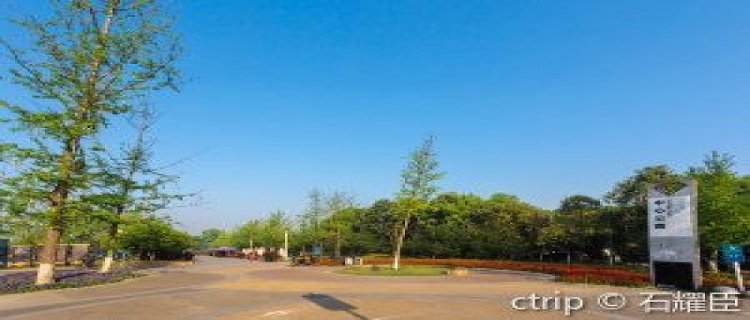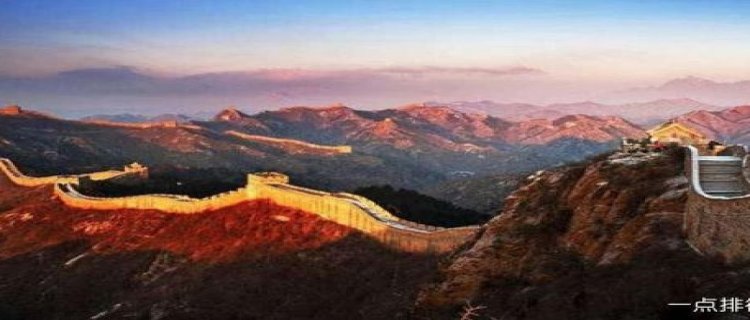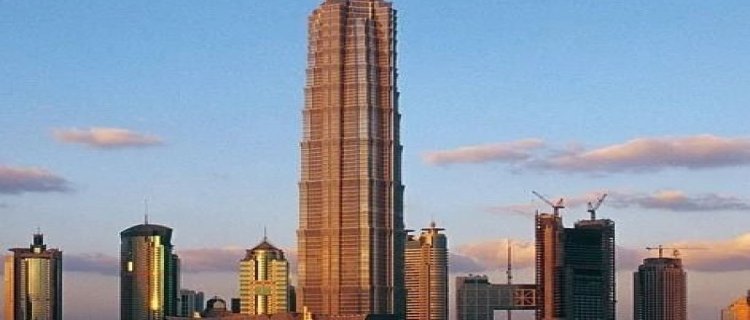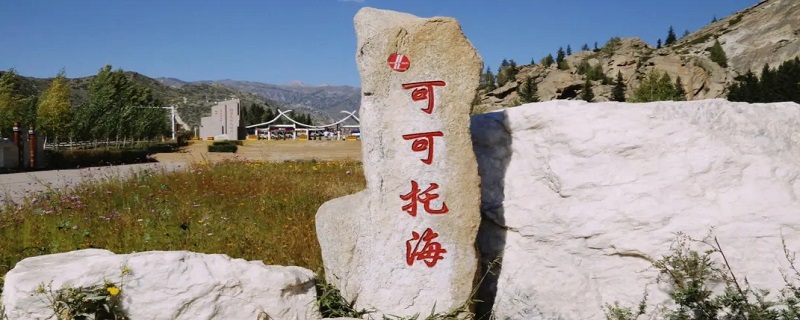南京景点英文介绍
Nanjing Facts
Nanjing is situated in the hilly areas of Nanjing and Zhenjiang in the lower reaches of Yangtze River,at 32:03N and 118:46E. It borders with the Yangtze River Delta to the east and the hilly areas of South Anhui to the west,adjacent to the water network of Taihu Lake in the south and the Jianghuai Plain in the north. With the "golden waterway" Yangtze River flowing through the city,it is 380km from the Yangtze River estuary to the sea,and about 300km to Shanghai,the largest city of China.
Administration Zones
Nanjing is the capital of Jiangsu Province,now has under its jurisdiction eleven districts of Xuanwu,Baixia,Jianye,Gulou,Qinhuai,Xiaguan,Yuhuatai,Qixia,Jiangning,Luhe and Pukou and two counties of Lishui and Gaocun. The total area is 6598 square kilometers,including 4728 square kilometers as urban area,and its total population is 6.4 million.
History
Nanjing,an ancient capital of China,enjoys a worldwide reputation for its history and culture. Archaeological findings show that human ancestors lived in Nanjing area around 300,000 years ago,and primitive villages took shape 6000 years ago. These inhabitants were the original local people. From then on,people lived and multiplied in this area generation after generation.
In 472 B. C.,under Goujian (King of State Yue)'s order,a city historically called "Yue City" was built on the site of Rain Flower Terrace. That is the earliest record of city construction in Nanjing area,and by now it has a history of 2,470 years. During the Three Kingdoms Period,Dongwu (Eastern Wu) moved its capital to Nanjing - called "Jianye" then,in 229 A. D.. Thereafter,dynasties like Dongjin (Eastern Jin),Song,Qi,Liang,Chen,Nantang (Southern Tang - in Five Dynasties Period),Ming,Taiping Heavenly capital Kingdom and Republic of China in turn,established their capital here. In the past 1,700 years,Nanjing has achieved its fame as "an ancient capital of ten dynasties". Dynasties waxed and waned,thus left rich legacy of ancient times. Abundant historic relics date back to many stirring stories and epic legends of the past.
During Ming Dynasty,Nanjing got its present name for the first time. Over the long period of history,it had other names like Moling,Stone City,Jianye,Jiankang,Baixia,Shangyuan,Shenzhou,Jiangning,Jiqing,Yingtian and Tianjing. Its name might be different,yet the city itself kept being outstanding for its ancient history,brilliant culture,beautiful scenery and great achievements - therefore,it holds an important place in Chinese history.
Confucius[k?0?5n’fu∫j?0?5s 孔子] temple[templ寺庙 ] & the Qinhuai river scenic[si:nik风光 ] area[ε?0?5 ri?0?5 地带]
孔庙和秦淮河风光带
1:The Confucius temple, located [lou’keitid位于]at the Qinhuai River scenic[si:nik风景的] area,
孔庙位于秦淮河风光带
2:is a well-known tourist[tu:rist旅游者 ] resort[ri’zэ:t常去度假的地方 ] of the ancient capital Nanjing .
她是古都南京闻名的旅游度假地。
3the river banks of Qinhuai are known for Confucius Temple
秦淮河因孔庙而闻名。
4and jointly[ d3эintli连带地] called the Confucius temple area.
因此也叫夫子庙地区。
5the Confucius temple is no doubt[ daut 怀疑] the most famous.
孔庙无疑是最著名的
6The temple is the place for people to pay worship[w?0?5:∫ip 崇拜] to Confucius.
庙是供人们崇拜孔子的地方
7:The Confucius temple here in Nanjing was first built in 1034
孔庙在南京之一次建于1034。
8and rebuilt[ri:blt重建] in 1986
重建于1986年
9The temple we often mentioned[men∫?0?5n提出] should include[inklu:d包括] three architectural [a:kitekt∫?0?5r?0?5建筑]complexes[kэmpleks群,综合体]:
我们常提的孔庙应该包括三个建筑群:
10the temple of Confucius with the hall of great achievements[?0?5’t∫i:vm?0?5nt大成] as the main [mein主要的]body,
孔庙及主体建筑大成殿
11the palace[p?0?3lis宫殿] of learning and the imperial[impi?0?5ri?0?5l帝国] examination [igz?0?3mi’nei∫?0?5n考试]center.
学宫和国家考试中心。
南京一些景点的英文名称
南京:
钟山风景区 Zhongshan Hill Scenic Area
中山陵 Dr.Sun Yat-sen’s Mausoleum明孝陵 Ming Emperors Tomb
灵谷公园 Linggu Park美龄宫 Meiling Palace
孙中山纪念馆 The Memorial Hall of Dr.Sun Yat-sen音乐台 Music Platform
梅花山 P lum Blossom Hill中山植物园 Zhongshan Batanical Garden
紫金山天文台 Purple Moutain Observatory海底世界 Underwater World
白马石刻公园 White Horse Park玄武湖公园 Xuanwu Lake Park
鸡鸣寺 Jiming Temple台城 Taicheng City
九华山公园 Jiuhuashan Hill Park情侣园 The Couple Park
秦淮风光带 Qinhuai Scenic Zones
秦淮河 Qinhuaihe River夫子庙 The Confucius Temple
江南贡院 Historical Exihibition Hall of Jiangnan Institute For Imperial Examination
李香君故居 Former Residence of Li Xiangjun瞻园 Zhanyuan Garden
桃叶渡 Taoye Ferry吴敬梓故居 Former Residence of Wu Jingzi
王谢古居 The Ancient Residence of the Wang’s and the Xie’s
白鹭洲公园 Bailuzhou Garden中华门 Zhonghuamen Gate
石城风景区 Stone City Scenic Area
总统府 Presidential Palace梅园新村 Meiyuan Xincun Memorial Hall
南京博物院 Nanjing Museum朝天宫 Chaotiangong Palace
鼓楼 The Drum Tower甘熙故居Former Residence of Ganxi
清凉山 Qingliangshan Hill石头城 Stone City
乌龙潭公园 Wulong Pond Garden莫愁湖公园 Mochou Lake Park
大 *** 纪念馆 Memorial Hall to the Victims of Nanjing Masscre by Japanese Invaders
中华织锦村 Chinese Brocade Village红山森林动物园 Hongshan Forest Zoo
江苏南京广播电视塔 The Broadcast Television Tower of Nanjing,Jiangsu Province
大江风貌区 The Great River Scenic Area
长江大桥 Nanjing Yangtze River Bridge长江二桥 The Second Nanjing Yangtze River Bridge
狮子山阅江楼 Yuejianglou Tower of Lion Mountain静海寺 Jinghai Temple
燕子矶 Yanzi Rock江心洲 Jiangxinzhou Islet
栖霞风景区 Qixia Scenic Area
栖霞山 Qixia Mountain栖霞寺 Qixia Temple
舍利塔 The Dagoba千佛岩 Thousands of Buddist Rock Cave
南朝陵墓石刻 The Stone Inscription of Tomb in Southern Dynasty
南郊风景区 Scenic Area in the Southern Suburds
雨花台 Rain Flower Terrace弘觉寺塔 Pagoda of Hongjue Temple
郑和墓 Tomb of Zhenghe将军山 General Hill Scenic Area
南唐二陵 Two Cemeteries of the Southern Tang Dynasty
浡泥国王墓 Tomb of the King of Brunei
希望对你有用!
救急啊~急需南京景点英文介绍和翻译.
Confucius[k?n’fu∫j?s 孔子] temple[templ寺庙 ] & the Qinhuai river scenic[si:nik风光 ] area[ε? ri? 地带]
孔庙和秦淮河风光带
1:The Confucius temple, located [lou’keitid位于]at the Qinhuai River scenic[si:nik风景的] area,
孔庙位于秦淮河风光带
2:is a well-known tourist[tu:rist旅游者 ] resort[ri’zэ:t常去度假的地方 ] of the ancient capital Nanjing .
她是古都南京闻名的旅游度假地。
3the river banks of Qinhuai are known for Confucius Temple
秦淮河因孔庙而闻名。
4and jointly[ d3эintli连带地] called the Confucius temple area.
因此也叫夫子庙地区。
5the Confucius temple is no doubt[ daut 怀疑] the most famous.
孔庙无疑是最著名的
6The temple is the place for people to pay worship[w?:∫ip 崇拜] to Confucius.
庙是供人们崇拜孔子的地方
7:The Confucius temple here in Nanjing was first built in 1034
孔庙在南京之一次建于1034。
8and rebuilt[ri:blt重建] in 1986
重建于1986年
9The temple we often mentioned[men∫?n提出] should include[inklu:d包括] three architectural [a:kitekt∫?r?建筑]complexes[kэmpleks群,综合体]:
我们常提的孔庙应该包括三个建筑群:
10the temple of Confucius with the hall of great achievements[?’t∫i:vm?nt大成] as the main [mein主要的]body,
孔庙及主体建筑大成殿
11the palace[p?lis宫殿] of learning and the imperial[impi?ri?l帝国] examination [igz?mi’nei∫?n考试]center.
学宫和国家考试中心。
12As early as in 337 A.D.[ei’di:公元],
早在公元337年
13but at that time there was only the palace[p?lis宫殿] of learning without the Confucius temple.
那时仅有学宫,没有孔庙。
14The temple was built up and extended[ikstendid扩大] on the basis [beisis基础]of the palace of learning until 1034.
直到1034年孔庙才在学宫的基础上建立和扩大起来
15The Confucius temple complex[kэmpleks 复杂] covers [k∧v? 包括]the pan[p?n畔] pool[pu:l池],screen[skri:n屏,照壁] wall,the gateway[geitwei通道] of all scholars[skэl?学生,有文化],
孔庙综合包括:泮池、照壁、天下文枢坊、
16juxing[聚星] pavilion[p?’vilj?n亭],Kuixing[魁星] pavilion, Lingxing[灵星 ] gate,
聚星亭、魁星亭、棂星门。
17the hall of great achievements[?‘t∫i:vm?nt 达成] and the gate etc[ =et cetera等等et’set?r? ].
大成殿和大成门等等。
18As the confucius temple in qufu,Shandong province
在山东省曲阜的孔庙
19is built by the side of the pan river,
是建在泮水之滨的
20all the temples of Confucius in the country
所有全国的孔庙
21are built at the riverside
都建在河边
22and the water in front of Confucius temple is called pan pool.
孔庙前面的水叫泮池。
23And this has become a custom[k∧st?m惯例] through[θru:在期间] long usage[ju:sidЗ惯用法]
这形成了长期的惯例。
24this confucirs temple makes the natural stream[stri:m流动] of the Qinhuai river as its pan pool,
这里的夫子庙把秦淮河流动的水作为它的泮池
25which is also called the pool of crescent[kresnt新月] moon “by the local[louk?l当地] people.
当地的人们把它叫着月牙池
26Standing at the southern bank of the pan pool is the screen[skri:n屏] wall,
泮池南边站立的是照壁
27which is 110 meters long and 10 meters high.
它110米长,10米高
28it ranks[r?ηk更高点] top among all the screen walls across[?’krэ:s遍布各地] the county.
它位于全国所有照壁之冠
29The wall was built in 1575 and newly renovated [‘ren?,veit重做]in 1984 .
这个照壁建于1575年,近来重建于1984年
30the function [f∧ηk∫n功能]of the wall
照壁的功能
31was to indicate[indikeit表明] that the confucirs’ learning was too profound[pr?faund渊博] to be understood by common[kэm?n普通] folks.[fouk民众]
是表明孔子渊博的学问被普通百姓所接受
32Another function was to cover up遮挡 the main building of the temple,
另一功能是遮挡住寺庙的主体建筑
33so as to以便 give people an impression .[impre∫?n印象]of its grandeur[’gr?n dЗ?辉煌] and magnificence[m?g’nifisns庄严]
以便给人们一个它辉煌而庄严的印象
34The gateway[geitwei入口处] of all scholars[skэl?学者] was first built in 1586 in an imitation[imitei∫?n仿制] of that in Qufu.
天下文枢坊始建于1586年仿曲阜天下文枢坊,
35The meaning of the structure[str∧k t∫?] was to refer[rif?:归于] to Confucius as the hub[h∧b中心] of all writings and ethics[eθiks道德] in ancient times.
它结构的意思是所有文章和道德的中心都归于孔子。
36lingxing gate is also called the gate of etiquette[eti’ket礼仪]
棂星门又叫礼仪门
37specially built for emperors[emp?r?皇帝] to offer[э:f?提供] sacrifice[s?krifais祭祀] to Confucius .
它是专为皇帝祭祀孔子而建的
38the gate built in front of confucius temple
它建于孔庙前
39implies[implai暗指] the meaning of
它的寓意是
40“people of talent[t?l?nt天才] coming forth[fэ:θ涌现] in large numbers[n∧mb?大量]
大量人才涌现
41and stability[st?‘biliti稳定] of the country.”
国家稳定
42Dacheng gate or the gate of great achievements[?t∫ivm?nt达成]
大成门或集大成的门,
43is also called halberd[h?b?d戟] gate,
又叫戟门
44which is the front door of the Confucius temple.
它是孔庙的前门
45As Confucius epitomized[ipit?maiz作为缩影] Chinese culture,
作为中国文化的宿影的孔子
46he was posthumously[pэstjum? *** 后] granted[gra:ntid假定] the title[taitl称号] of super saint[seint圣徒] Confucius.
他 *** 后被授予至圣先师的称号
47In the entrance[entr?ns入口] hall[门厅] of the gate there are four old stone tablets [t?blit碑]:
在大门的入口门厅有四块古石碑
48The tablets of Confucius asking laozi of the ethical[eθiks道德] codes[koud经].[孔子问礼图碑]
一是孔子请教老子道德经的图碑
49It was made in 484 A.D. ring the southern dynasty
它是刻于南朝公元484年
50recorded[rekэ:d记录] on the tablet is the personal[p?s?nl个人] experience[ikspi?ri?ns经验] of Confucius on his visit to Luoyang,
碑上记录的是孔子去洛阳访问的经验
51the capital of the eastern zhou dynasty in 518 B.C.
在公元前518年东周王朝首都
52where Confucius made investigations[investingei∫?n研究] on the system of institutions[institju:∫?n制度] of the zhou
孔子研究了周王朝制度
53and went in quest[kwest寻找] of the ways of how to prosper[prэsp?繁荣] and stabilize[steibilaiz稳定] the country
去寻找了如何繁荣和稳定国家的 ***
54and of how to consolidate[k?nsэlideit联合] the power of slave[sleiv奴隶] owners[oun?主人] in the lu state[steit国家].
如何在鲁国联合奴隶主的力量
55The tablet of jiqing Confucius temple.
[集庆孔庙碑]
56In 1308 when the yuan dynasty reigned[rein统治] over the country,
1308年,元朝统治全国
57emperor wuzong issued[i∫iu发布] an imperial[impi?ri?l帝国] edict[i:dikt布告]
武宗皇帝发布了圣旨
58”take ecation as the state administration[?dministre∫?n管理] of the empire[empai?皇权]”
以兴学作士为王政
59In the next fall when the Confucius temple started to be rebuilt ,
第二年孔庙开始被重建
60lu wrote an inscription[inskrip∫?n碑文] for the tablet.
卢挚为碑撰写了碑文
61but the tablet was not made right away until 22 years later in 1330.
当时没有勒石,直到22年后在1330年
62In the xianfeng years of the qing dynasty,the Confucius temple was burnt down in a war
清朝咸丰年,在战争中被毁,
63and the tablet was missing[misiη失踪]
此碑失踪。.
64ring the reconstruction[ri:k?nstr∧kl?n重建] of the Confucius temple in 1986, the tablet happened[偶然发生] to be unearthed[∧n’?:θ发掘] from the underground[地下]
1986年复建文庙时碑在地下被发现
65The tablet of the four saints[封四圣碑]
66In 1331 emperor wenzong of the yuan dynasty granted [gra:ntid加封]the four disciples[di’sai’pl门徒] of Confucius
在1331年元朝文宗皇帝加封孔子的四个门徒
67Yanhui, zengshen, kongji and mengke as 4 saints[] second to Confucius
颜回、曾参、孔伋和孟轲为四亚圣
68and they were carved [ka:v雕刻]on a stone tablet to inform [infэ:m告知]the whole country.
以此刻在石碑上告知全国。
67tablet of madam super saint Confucius.[封至圣夫人碑]
68 In 1331 the wife of Confucius was posthumously awarded the title of Madam Super Saint(孔子之妻被加封为至圣夫人)
1331年孔子之妻被加封为至圣夫人
69and a stone tablet was made for her according to the imperial decree (以此旨勒石刻碑) and erected here side by side with the tablet of the four saints (与封四氏碑并列于夫子庙) .
70Dacheng Hall or the Hall of Great Achievements (大成殿) is the main building of Confucian Temple
大成殿是文庙的主体建筑,
71and the very place to enshrine and worship Confucius (供奉和祭祀孔子的地方).
72 The hall is a double-eaved and gable-roofed structure in ancient imitation (重檐歇山顶仿古建筑),
73Displayed in the hall there is a huge portrait of Confucius (孔子巨幅画像),
which is the largest one through out the country.
Also put on show are the portraits of Yan Hui (颜回), Zeng Shen (曾参), Kong Ji (孔伋) (the grandson of Confucius) and Mengke (Mencius), the four disciples of Confucius as well as a number of ancient musical instruments.
Hung on the inner walls of the hall there are 38 jade-and-jadeite-carved paintings inlaid with gold, jewelry and mother-of-pearl (罗钿) about the life story of Confucius (孔子生平事迹).
In the temple courtyard (庙院) enclosed by roofed corridors, there is a large open-air terrace (露台), which used to be an altar for holding sacrificial ceremony and performance of songs and dance (曾是祭祀和歌舞的地方). on the terrace there stands a huge bronze statue of Confucius. the forehead of the statue appears a unique wisdom-and-foresight of the great thinker (眉宇间透露出伟大思想家特有的睿智), better making a deep impression on visitors.
Juxing Pavilion At the west of the temple square there stands a hexagonal pavilion (the pavilion with its 6 eaves upturned) called “Juxing”. The name of Juxing means “assembly of stars” (群星汇聚) and “a galaxy of talent” (人才荟萃), because all the men of letters or well-ecated people were regarded as stars over the sky in feudal China. Juxing pavilion was the place for intellectuals to converge on (聚集) and to learn from each other by exchanging their experience in study (切磋学习心得).
Kuixing Pavilion (now called Kuiguang Pavilion) (魁光阁) at the east of Pan Pool lies the Kuixing Pavilion, which is also called the Pavilion of God of Literature (文星阁). The three-storied hexagonal tower was the place for provincial examination candidates (乡试士子们) to pay worship to Confucius before they sit for imperial examinations (应考前拜孔的地方). Later,the pavilion was turned into a teahouse (茶社) for candidates (考生) to meet friends with tea drinking.
Kuixing is the star at the tip of the bowl of the Big Dipper (魁为北斗星之之一星), one of the 28 constellations over the sky (天上28个星宿之一). It was said to be God of literature dominating the fortune of culture and ecation (主宰文运之神) and ,Confucius was regarded as the God. In times of imperial examinations (在科举时代), the examination candidates often came to offer sacrifice to Confucius in the hope of successfully passing the imperial examinations and becoming a provincial graate (以求中举).
The Palace of Learning (学宫) The Palace of Learning is an architectural complex consisting of Mingde Hall or the Hall of Bright Virtue (明德堂), Zunjing Library (尊经阁), Qingyun Tower (青云楼) and Ancestral Temple for Worshiping the Parents of Confucius (崇圣祠) etc.. The Palace of Learning was an institution of higher learning (高等学府) of the prefecture in ancient times, usually built behind Confucian Temple.
Mingde Hall or the Hall of Bright Virtue (明德堂) was the main hall (正堂) of Palace of Learning ,the place for putting up the list of successful candidates (张悬科第题名榜) in the years of the imperial examination system and was also an assembly auditorium ( *** 礼堂) for the students to attend lectures on Confucius teachings(圣教)and imperial edicts (上谕) given by assistant instructor(听训导师宣讲圣教和上谕) after their pilgrimage on the first and the 15th day (朔、望日) every lunar month.
Zunjing Library (尊经阁) was a two-storied building with each having 5 rooms (上下两层各五楹). The upstairs was used to collect the Chinese traditional learning of the Ming Dynasty (明代国学),. The downstairs was the lecture hall (讲堂),where assistant instructors (训导师) used to give students lectures.
Qingyun Tower (青云楼) and Ancestral temple of Confucius Parents (崇圣祠)
The Qingyun Tower is a memorial temple (祠宇或祠堂) for enshrining ecational inspectors (督学) of the past dynasties (青云楼是供奉历代督学使的祠宇). The Ancestral Temple for Parents (崇圣祠) of Confucius was the place for students to offer sacrifices to Confucius parents. But someone also says it is the Saint-Admiring Temple specially for enshrining the deciples of Confucius (是祭祀孔门弟子的专祠).
有关南京景点——玄武湖,莫愁湖,中山陵的英文介绍,每个景点大约20个词左右的介绍,急急急急!!英文!
Dr. Sun Yat-Sen’s Mausoleum
IntroctionCovering an area of 80,000 square meters (about 20 acres), Dr. Sun Yat-sen's Mausoleum is located in the Zhong Mountain Scenic Area in the east suburb of Nanjing City, Jiangsu Province. As the mausoleum of Dr. Sun Yat-sen, the father of the Republic of China, it is considered the Holy land of Chinese people both home and abroad. With deep historical significance, magnificent architecture and beautiful scenery, it is a must see when traveling in Nanjing. Dr. Sun Yat-sen (1866-1925) was a great forerunner of the Chinese democratic revolution and led by Dr. Sun the Chinese people brought down the corrupt rule of the Qing Dynasty (1644-1911) and ended 2000 years of the feudal monarchy system, which led the Chinese peoples in to a new age.
Xuan Wu Lake Park
One of Nanjing's most pleasant and scenic places is the large Xuan Wu Lake Park. It is in the northwest of the city center, just next to one of the main shopping streets. The panorama of modern Nanjing and its beautiful natural surroundings surround the expanse of calm water. Most of the park is covered by a large lake dotted with a cluster of medium size islands, connected by tree lined causeways and bridges.To one side rises the green forested slopes of Zijin Mountain, while bright yellow walls and tall pagoda of a Buddhist temple crown a hill on the southern shore. The giant Ming Dynasty city walls wraps around two sides of the lake, while a forest of modern office towers and apartments glitter in the background. The islands themselves are a mix of groves, gardens, *** all pavilions, and grassy fields, with the occasional restaurant or tea house. A stroll though the park is a relaxing break from sightseeing and a unique ensemble of the many facets of modern Jiangsu.
没有莫愁湖的!~~
我要找南京夫子庙的英文介绍
夫子庙位于江苏南京市中华门内秦淮河北岸贡院街,是供奉和祭祀孔子的地方。北宋景佑元年(公元1034年),在此建文宣王庙。
Confucius Temple is located in Gongyuan Street on the North Bank of Qinhuai River in Zhonghua Gate, Nanjing City, Jiangsu Province.
It is a place to worship and sacrifice Confucius.In the first year of Jingyou in the Northern Song Dynasty (1034 A.D.), xuanwang temple was built here.
南宋初毁于兵火,绍兴年间重建,为建康府学,同时建科举考场——贡院。府学内有明德堂,堂额原为南宋末午民族英雄文天祥所书,清时山曾国藩改为篆书。
In the early period of the Southern Song Dynasty, it was destroyed by the fire and war. During the period of Shaoxing, it was rebuilt to build the Kangfu school and the imperial examination hall Gongyuan.
There is Mingde hall in the school. The hall was originally written by Wen Tianxiang, a hero of Wu nationality in the late Southern Song Dynasty. Zeng Guofan in the Qing Dynasty was changed to seal script.
元为集庆路学。明初是国子监,后改应天府学。清时为江宁、上元二县的县学。现存建筑是清同治八年(公元1869年)重建。
Yuan is Jiqing road school. At the beginning of Ming Dynasty, it was the Imperial College, and later it was changed to Tianfu school.
In Qing Dynasty, it was the county school of Jiangning and Shangyuan. The existing buildings were rebuilt in 1869.
夫子庙利用秦淮河水为泮池,南岸有照壁,筑堤环抱。有聚星亭、思乐亭、棂星、大成、人成殿、明德堂、尊经阁、崇圣祠、垒星阁等建筑。
The Confucius Temple uses the Qinhuai River as pan pool, with Zhaobi on the south bank, surrounded by dikes.
There are star gathering Pavilion, sileting, Lingxing, Dacheng, Rencheng hall, Mingde hall, Zunjing Pavilion, Chongsheng temple, Leixing Pavilion and other buildings.
六朝时期以迄明清,夫子庙一带均是繁华的地方。解放后,经整理改造,已成为群众的文化活动场所。
From the Six Dynasties to the Ming and Qing Dynasties, the area of Confucius Temple was prosperous. After liberation, it has become a place of cultural activities for the masses.
扩展资料:
主要景点:



